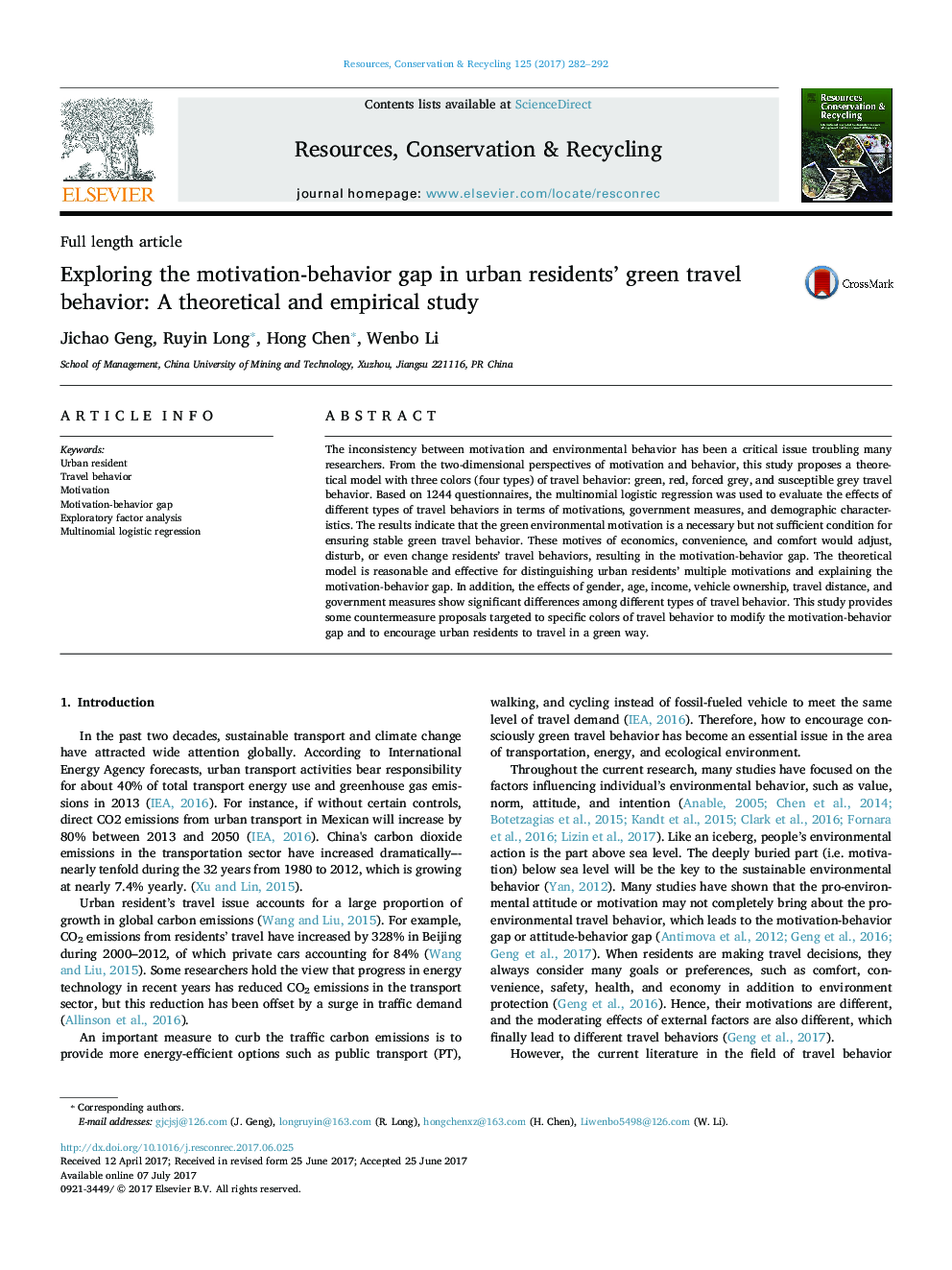| Article ID | Journal | Published Year | Pages | File Type |
|---|---|---|---|---|
| 5118667 | Resources, Conservation and Recycling | 2017 | 11 Pages |
â¢A theoretical model of color-coded travel behavior is put forward.â¢Each type of travel behavior has double dimensions of motivation and behavior.â¢Color-coded behaviors differ in motives, demographics, and attitudes to policies.â¢Motivation-behavior gap is explored and discussed.â¢Tailored policy interventions to promote green travel behaviors are proposed.
The inconsistency between motivation and environmental behavior has been a critical issue troubling many researchers. From the two-dimensional perspectives of motivation and behavior, this study proposes a theoretical model with three colors (four types) of travel behavior: green, red, forced grey, and susceptible grey travel behavior. Based on 1244 questionnaires, the multinomial logistic regression was used to evaluate the effects of different types of travel behaviors in terms of motivations, government measures, and demographic characteristics. The results indicate that the green environmental motivation is a necessary but not sufficient condition for ensuring stable green travel behavior. These motives of economics, convenience, and comfort would adjust, disturb, or even change residents' travel behaviors, resulting in the motivation-behavior gap. The theoretical model is reasonable and effective for distinguishing urban residents' multiple motivations and explaining the motivation-behavior gap. In addition, the effects of gender, age, income, vehicle ownership, travel distance, and government measures show significant differences among different types of travel behavior. This study provides some countermeasure proposals targeted to specific colors of travel behavior to modify the motivation-behavior gap and to encourage urban residents to travel in a green way.
